I don't think anyone is saying that Apple does not have flaws. Windows has billions of little flaws that keep a lot of us from ever desiring to use it. I know for development work Windows is an absolute disaster and would be unusable for my work. macOS, on the other hand, is not dissimilar from Linux (and other Unixes), has most of the tools I need built-in (ssh, clang, etc), and is much cleaner and easier to maintain than Windows. I would never work, and never have, for a company that required me to use Windows for anything. At my current job the majority pick macOS with Linux a close second, and Windows is pretty much used only by those who need to write Windows-specific Apps.Well then. Enjoy your pristine and sacred Apple ecosystem while accepting all of its flaws as if they never existed.
Got a tip for us?
Let us know
Become a MacRumors Supporter for $50/year with no ads, ability to filter front page stories, and private forums.
macOS Monterey: Here Are All the Features Your Intel Mac Won't Support
- Thread starter MacRumors
- Start date
- Sort by reaction score
You are using an out of date browser. It may not display this or other websites correctly.
You should upgrade or use an alternative browser.
You should upgrade or use an alternative browser.
Actually I use iCloud for windows-works beautifully. I drop a file/photo into my icloud account on my iPhone and voila there it is on my Windows laptop. Works with other files too.What a money grab this is. If Google / Microsoft can figure out Air Drop, I'd be switching tomorrow.
Well, I can do just fine without all those features. But now, there's one feature that's available to me, on my Intel mac that's not available on Apple silicon, it's called Boot Camp. It is one single most important feature. Well, at least for me. Because I need my Windows. Like it or not, but the end user computing world runs on Windows, not MacOS. Actually, even the server side largely runs on windows, especially if you consider Azure that runs on Hyper-V, but anyways. I won't buy a new Mac, because it doesn't run Windows. Unfortunately. Maybe I'll get a new Lenovo X1 Extreme, may an XPS, but no Macs anymore. Because there's no Boot Camp on the Apple Silicon.
Apple's official public release of macOS Monterey arrives on Monday, October 25, and users should be aware that there are several features in macOS 12 that are only available to machines powered by Apple silicon chips. In other words, they won't work on Intel-powered Macs.
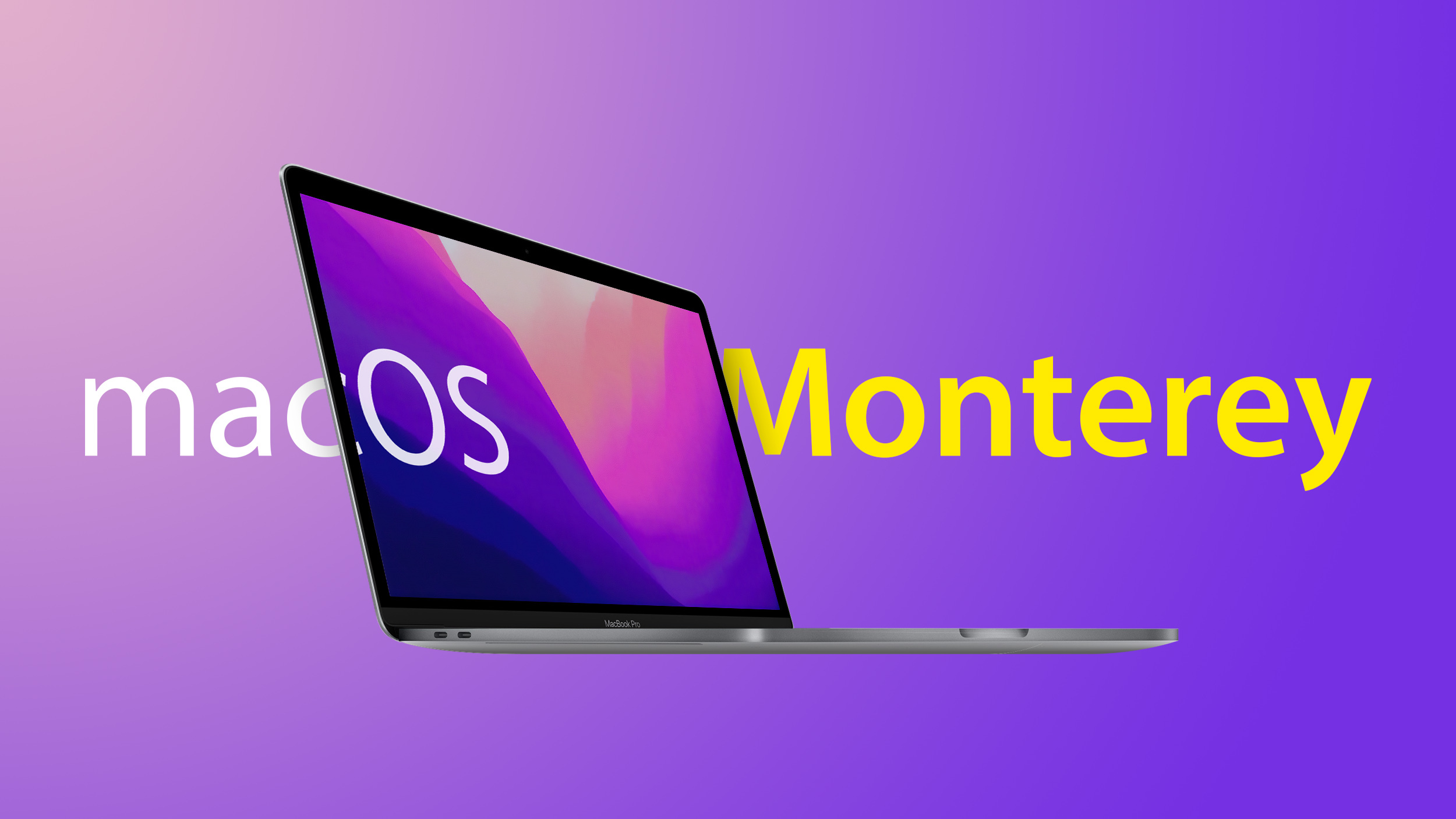
Differentiating the user experience like this this isn't anything new to iOS users, since each year the latest iPhone models boast features that aren't available on iPhones that Apple released the previous year.
Mac users on the other hand aren't so used to such fast-paced changes, and the latest software-based depreciations could come as a shock to some. With the possible exception of Object Capture, the following macOS Monterey features won't be available to anyone running the new software on an Intel Mac, even if it was purchased from Apple only last year.
Portrait Mode in FaceTime
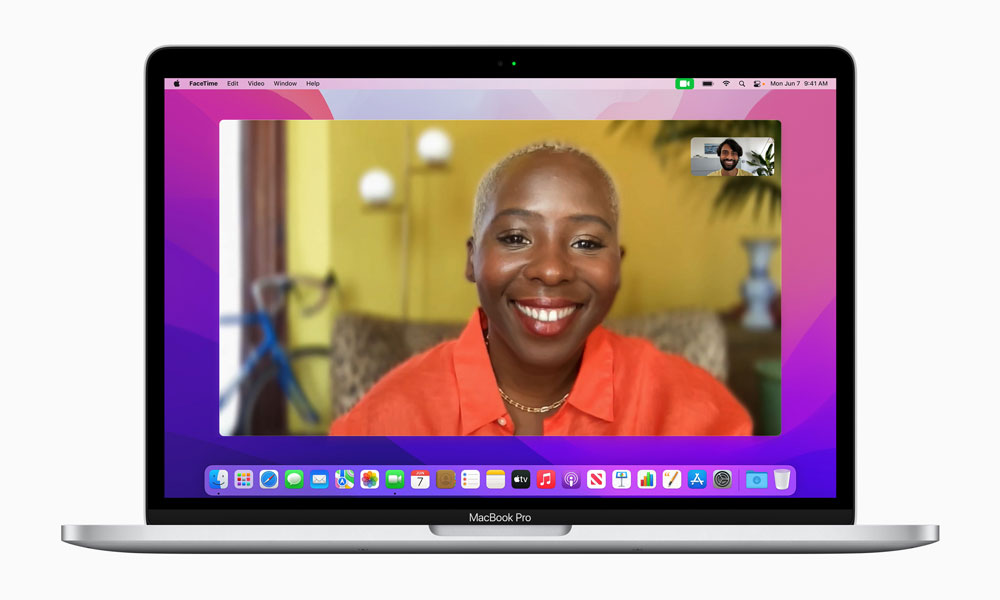
With Portrait mode in macOS Monterey, you can blur your background during a FaceTime call, so that the focus is on you rather than what's behind you. The feature is commonly used by other video conferencing apps like Zoom and Teams to obscure untidy domestic scenes and other sources of distraction or embarrassment. If you're using an Intel-powered Mac though, it won't be an option.
Maps Interactive Globe
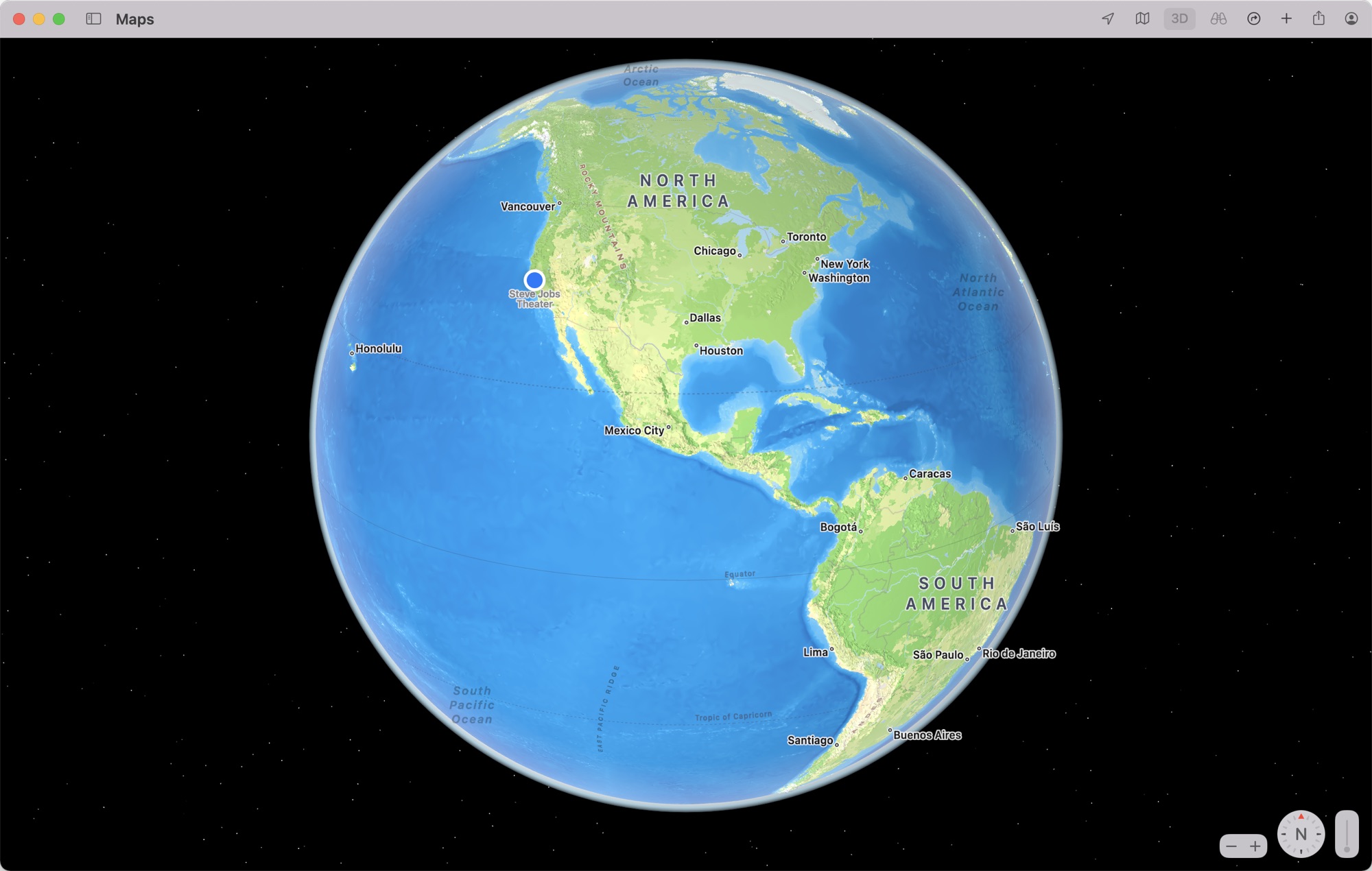
On Macs powered by M1, M1 Pro, and M1 Max chips, Apple has enhanced the Maps app to include a new globe view that allows you to spin the world around and zoom into different regions on Earth. In previous versions of macOS, zooming out maximally in Maps would present you with a flat world map, but the new globe view gives you a three-dimensional view of Earth from space that's a lot more fun to navigate.
More Detailed Cities in Maps
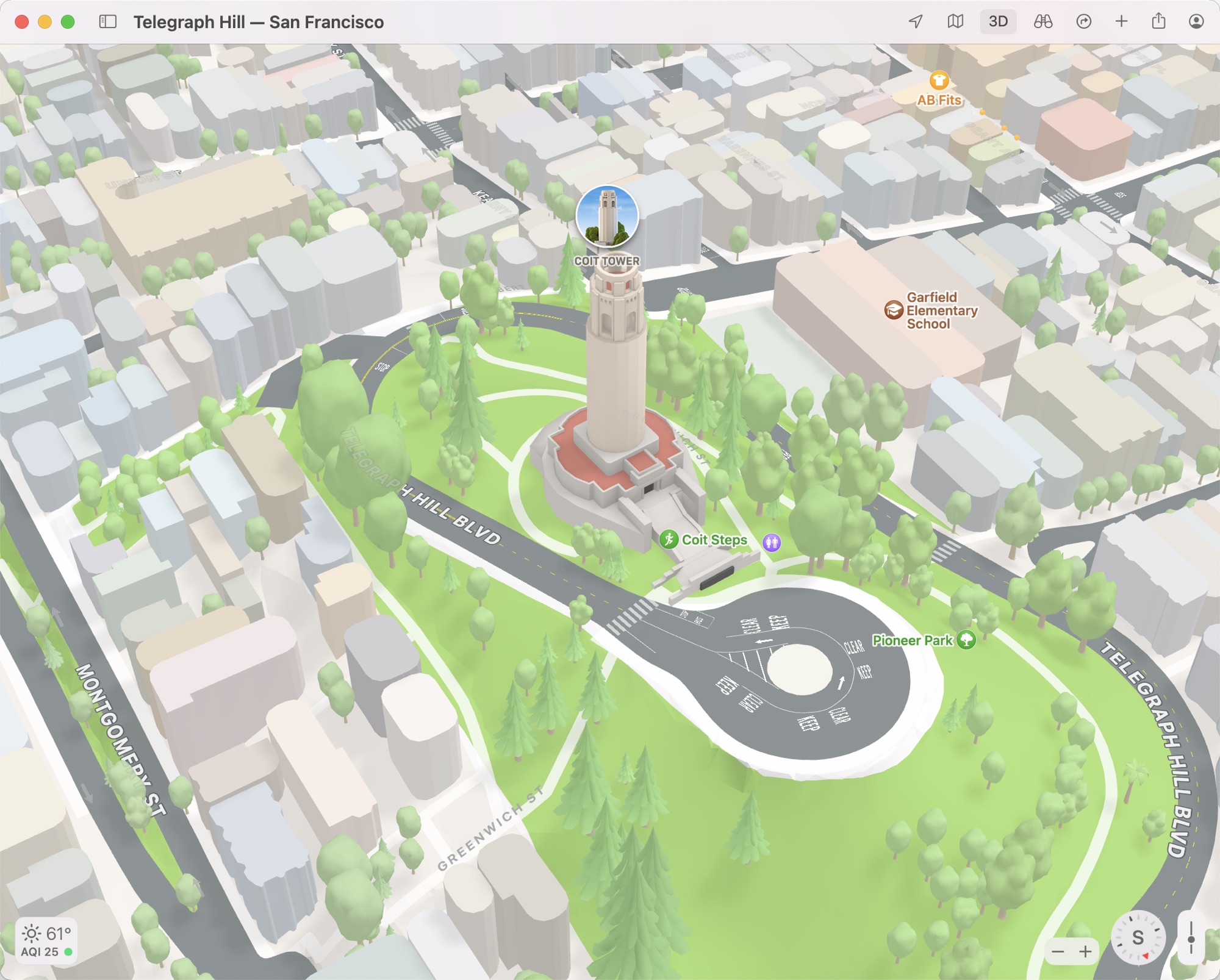
The globe also allows you to drill down into areas, where you'll find more detailed information on vast geological features like mountain ranges, deserts, forests, and oceans, and more comprehensive maps in cities like San Francisco, Los Angeles, New York, and London, which includes details for elevation, roads, trees, buildings, landmarks, and more. If you're using an Intel-based Mac, this extra detail will be lacking.
Object Capture
Object Capture allows users to create a photo-realistic, AR-optimized 3D object by stitching together a series of photographs. The technique is called photogrammetry, which previously required specialized software to work out, but with Monterey, Apple has integrated its Object Capture API into macOS, which makes the process faster and a whole lot easier when using an app that supports it.
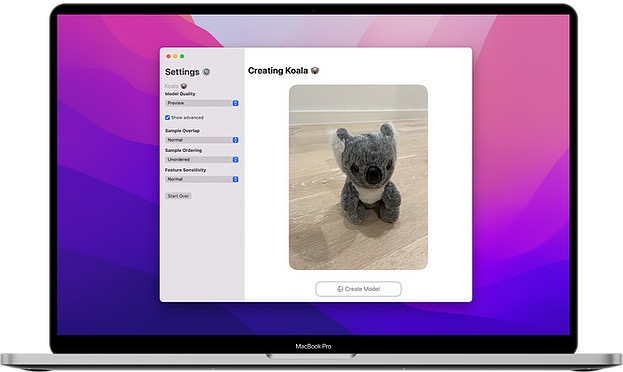
For example, using an app like PhotoCatch allows users to import a video, or several photos of an object from several angles, and with no additional effort, turn them into a realistic 3D model of the object, which can then be easily integrated into any AR app. All Apple Silicon Macs support Object Capture, but it is only supported on Intel Macs that have at least 16GB of RAM and 4GB of VRAM.
Siri Text-to-Speech

The Text-to-speech feature in macOS allows users to select portions of text or highlight whole documents to be read out to them. Users of Apple Silicon Macs can use the text-to-speech voice feature in more languages than Intel-based Mac users, including Swedish, Danish, Norwegian, and Finnish.
On-Device Keyboard Dictation

With keyboard dictation, you can dictate text anywhere you can type it, and the feature improves the more you use it, personalizing over time. On Apple Silicon Macs, keyboard dictation now protects user privacy by performing all processing on-device, meaning it's completely offline. And thanks to on-device dictation, users can also dictate text of any length without a timeout. On Intel Macs, however, there's a time limit of 60 seconds.
Apple Speeds Up Its Transition Away From Intel
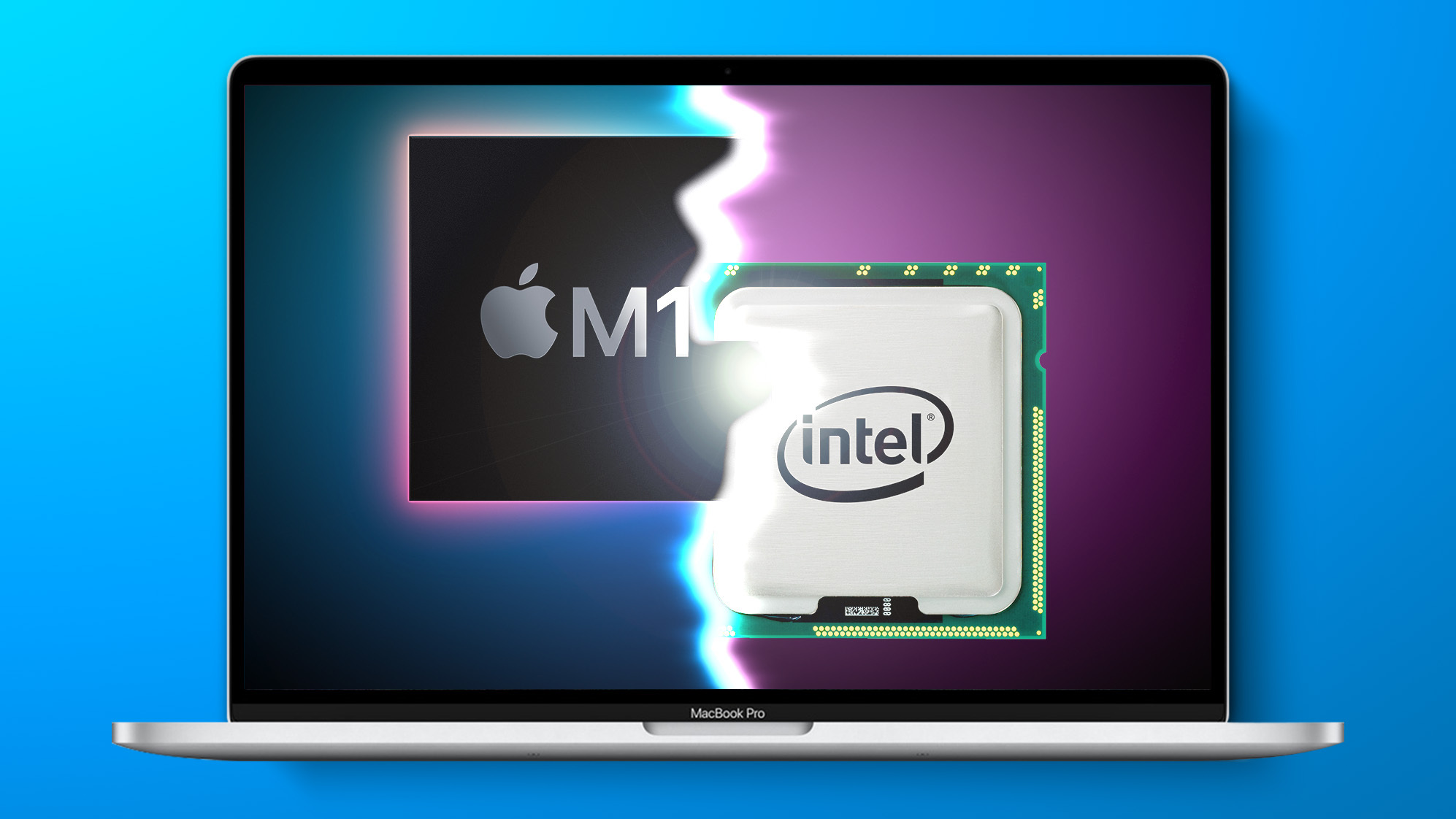
This is a unique period in the Mac's history, as Apple is currently in the midst of a two-year transition from Intel processors to its custom Apple silicon chips in Macs, with the changeover slated to be completed by WWDC 2022.
The transition began last November, when Apple debuted the M1, its first custom-designed chip, in the entry-level 13-inch MacBook Pro, MacBook Air, and Mac mini, followed by the 24-inch iMac in April. Just last week at its "Unleashed" event, Apple unveiled new 14-inch and 16-inch MacBook Pro models powered by even higher performance M1 Pro and M1 Max chips.
Intel chips continue to be available in desktop machines that include the Mac mini, iMac, and Mac Pro, but upgrades for all of those devices are in the works and expected next year, so expect the next version of macOS to exclude Intel-based Mac users to an even greater extent than Monterey.
Article Link: macOS Monterey: Here Are All the Features Your Intel Mac Won't Support
For whatever reason Apple decided to tie specific features in Monterey and iOS/iPadOS 15 to the second generation neural engine. All of these features listed that won’t run on Intel Macs that are in iOS also aren’t available on iOS devices with an A11 processor or older.
Live text, FaceTime portrait mode, etc. also won’t run on a base model iPad with A10 that was on sale just over a year ago.
Live text, FaceTime portrait mode, etc. also won’t run on a base model iPad with A10 that was on sale just over a year ago.
Steve Jobs left his company to a safe bean counter to safeguard it without realizing he would become egomaniacal himself into reducing market share even further.
Just remember, Tim Cook DIDN'T CREATE ANYTHING in the Apple universe YET!
Has no one not noticed this?
Just remember, Tim Cook DIDN'T CREATE ANYTHING in the Apple universe YET!
Has no one not noticed this?
Apple Watch? Airpods? Apple Music?Steve Jobs left his company to a safe bean counter to safeguard it without realizing he would become egomaniacal himself into reducing market share even further.
Just remember, Tim Cook DIDN'T CREATE ANYTHING in the Apple universe YET!
Has no one not noticed this?
There was already a thread about this by WWDC... this was already known. No need to have a new outrage cycle over this. I feel like some MacRumors articles, especially regarding Intel, are getting a bit sensationalist.
These features likely rely on the Neural Engine. It is very likely that they were originally for iOS and were brought over to the Mac only because some of them have the Neural Engine now too. Don't think of it as a "minus" for Intel Macs, think of it as an "addition" to M1 Macs that didn't require any extra work. There are far better ways to cause planned obsolescence. (cough throttlegate cough)
These features likely rely on the Neural Engine. It is very likely that they were originally for iOS and were brought over to the Mac only because some of them have the Neural Engine now too. Don't think of it as a "minus" for Intel Macs, think of it as an "addition" to M1 Macs that didn't require any extra work. There are far better ways to cause planned obsolescence. (cough throttlegate cough)
It's definitely mean spirited rather than lazy, considering how easy it is to recompile code to run on the different silicons.But it is still ridiculous thad very recent and very expensive Apple Mac devices will not handle simple things like displaying a globe. It is just so lazy (or possibly just another small example of artificially created obsolescence).
The funny thing is, I still run Mojave on my 2015 MBP, that actually supports Monterey, because I choose to, because it is so stable and relatively bug free.Yeah Apple does this unfortunately. Sometimes they even ‘disallow’ certain older intel models from booting the operating system at all. Making you believe the features of the new OS will put a strain on the older Mac so as to not be a good experience. I say ‘disallow’ in quotes because while by default an unsupported mac model is prevented from booting the newer OS, Apple does allow the use of a boot flag to disable the kernel compatibility check and may possibly allow the OS to boot on the older hardware.
However, this is rubbish. Forced obsolescence in my opinion. With open core legacy patcher, my 9-year old MacBook Pro that got cut off by Apple after Catalina can totally run Big Sur and now Monterey. It lives on! And that Mac was upgradable. So with an SSD and 16 GB of ddr3 ram, it still runs very well despite its age.
Apple is full of it, when it comes to cutting off support of perfectly capable machines. With Apple silicon I don’t know how long they’ll support their m1 macs. But once they start cutting off support for the m1, I don’t know if there will be a way around it like on the intel side, other than needing to upgrade of course. Which in the end creates more e-waste. And incentivizes you to spend more money.
I liked Mojave the most, and even put it on my 2020 Mac Mini, but I only had 1 32-bit app, so I just upgraded to Big Sur, and probably Monterey later. I can always run that 32-bit app in a Windows VM, as the Windows version is basically the same.The funny thing is, I still run Mojave on my 2015 MBP, that actually supports Monterey, because I choose to, because it is so stable and relatively bug free.
How do you find the new versions compared to Mojave?I liked Mojave the most, and even put it on my 2020 Mac Mini, but I only had 1 32-bit app, so I just upgraded to Big Sur, and probably Monterey later. I can always run that 32-bit app in a Windows VM, as the Windows version is basically the same.
I'm not doing it for 32bit, even though I still do use TrueCrypt (I may have to find an alternative, maybe VeraCrypt works).
Have they solved the Win VM issue for M1 Macs yet?
You can install Windows 11 with some workarounds, but this actually falls on Microsoft due to their strict requirements. It would actually give apple an easy out to allow a path for Monterey to be the last macOS to support Intel. I still believe this might be the case given Apple's history anyway.What is also mean is that they won’t update Boot camp to support Windows 11 to give Intel Macs a new lease of life as a windows PC.
I have Windows 11 running on an early 2011 MBP, Mid 2012 and a 2016 escape MBP and works well.
Those are features I probably won't use on my M1 MacBook Air anyway. Also, since I am also considering installing Monterey on my 2012 15" unibody MacBook Pro via the unsupported patch deal, I found this worth reading.
There's nothing real jaw dropping, maybe a bit slower, but not much. Nothing really annoying.How do you find the new versions compared to Mojave?
It depends on what issue you're talking about, but I can't say they have for what I need.Have they solved the Win VM issue for M1 Macs yet?
Well said. But sadly ppl will defend for them in the comment sectionThis is just mean spirited of Apple, there's no reason that Intel Macs couldn't support the majority of these features, this is just Apple's attempt to hobble their Intel lines in order to "encourage" people to upgrade. I'm not a fan of this tactic.
Bruh 99% of people will never need these features that are apple M1 only.
That's the point. That's Apple's MO. They start with features nobody cares about (just enough to let people know they're missing out on "something"), and then they up the ante each year until 2-3 years later you feel like your $3000 MBP is a piece of $#!7.
And it basically is at that point. It's designed obsolescence.
They did the same thing with iPhones for years until people got pissed. Now they tend to be fully supported for at least 5 years, absent any actual hardware limits.
But now that they're trying to force a transition to a new platform, which is a "one time" deal, they're (apparently) okay with any backlash, as long as enough people get on board.
Last edited:
Thought the same when they announced it like it was a groundbreaking feature in WWDC.The Google Earth app had a 3D globe on my iPhone 3Gs... in 2010. Ok, Apple... I'm sticking with Catalina! I don't want Big Sur/Monterey's gross looking GUI or any ARM code anywhere near my pure Intel Mac! Catalina 4 Life! Who's with me!?!!??!!
Apple has always been evil.This is just mean spirited of Apple, there's no reason that Intel Macs couldn't support the majority of these features, this is just Apple's attempt to hobble their Intel lines in order to "encourage" people to upgrade. I'm not a fan of this tactic.
Remember releasing Messages on Lion (10.7) and then by December cutting the support? There are so many examples + dropping support on 4 year old Macs, but with a patch from MacRumors the OS runs perfectly fine.
Just FYI, I can even do that on My mid 2010 MacBook Pro with no issues. Also, Google Earth works on it perfectly, so yeah…A cash grab from Apple.No blurred background on FaceTime when I can do it in Teams on my 2014 iMac. Cash grab for sure.
Unlikely. Writing architecture specific code is a thing long gone in anything beyond compilers and kernels. At the application level where these things are at there is a API. True that Apple may have chosen not to implement the API on intel macs but that’d be surprising. They’d want the same base OS regardless of architecture so life is easier for developers, both internal and external to Apple.
This is a choice by Apple. And it really does feel like a business choice. The only argument I could really make is the battery life on intel macs might take a big hit using features that the neural engine is built for but that’s a pretty flimsy one as I see it.
The neural APIs probably won't work on an Intel Mac since they lack the neural engine the APIs uses. Thus the API probably isn't available on Intel Macs.
Therefore the programmer of the OS feature only have three choice
1) Neural API for M1 Macs, no support ofr Intel Macs
2) Abandon the feature
3) Neural API for M1 Macs, re-implement the feature using non-neural algorithms
4) Use the more inefficient non-neural feature for both types of Mac
For a line of Macs racing to extinction, it's an obvious choice to go for 1).
For the globe feature it might be even simpler. They didn't have the time or resources to test it properly or decided to not support it to save future testing and development costs.
Last edited:
A $4500 current-model Macbook pro bought with top of the line graphics hardware is going to start getting cut off from 3D graphics features, and won’t run Windows 11 to do it on that side either.
Someone at Apple made the calculation that instant EOL would lead to greater sales. That person assumed customers would never leave the ecosystem. That person should be fired.
It's mostly about saving resources and money on development and testing. You write software for the future, not the past.
Very few will leave the Mac ecosystem over this. It probably will pale in comparison to the number of new people buying more Macs because the M1 Macs are so efficient.
I'm someone who bought a Mac just last year, the top of the line MacBook Pro - cost pretty much £3,000...Yikes, glad I’m not someone who bought a Mac just last year.
Whilst these features are things I'd likely never use, it's still annoying. There's absolutely no reason this stuff couldn't run on an Intel Mac, it's basic stuff - there's no reason for it. It really damages my trust.
Laptops aren't like phones that you upgrade potentially every year, most people keep them for years. I've just got back into the Apple ecosystem and it was very expensive, so I'm not going to leave. But if I hadn't, or I was back at the point where I was about to make the leap - this kind of crap being pulled for no reason would definitely have stopped me. It's not like Apple has scarce resources, just keep supporting both and cut support after a reasonable number of few years.
Register on MacRumors! This sidebar will go away, and you'll see fewer ads.



